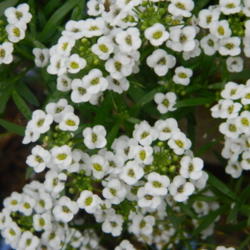
Would you like to have your garden bursting with color all season long? Do you want lots of floral "pizzazz" for the least amount of effort? Then our easy-to-grow annual flowers are just what you're looking for! Versatile annuals are a great way to keep the garden in bloom in a cheerful array of bright hues from from spring until frost. And because you're growing them from seed, annuals are economical as well.
Versatile and Easy
Just what are annuals? These are plants that complete their life cycle in one growing season -- from seed to flower and back to seed again. To do this, annuals grow quickly and bloom young. As long as you don't let them set seeds, which signals to plants that they have completed their life cycle, most will keep up a steady parade of blossoms until fall frosts shut them down.
Unlike biennials and perennials, which live for two and at least three seasons, respectively, annual flowers do need to be replanted each year. But this lets you try out new flowers and experiment with new combinations of colors and textures each season. And as long as they receive the proper growing conditions, most annuals flowers are trouble-free, with few insect and disease problems.
So spice up your garden with some of our flowering annuals this season and enjoy a rainbow of color all summer long.
'Carpet of Snow' Alyssum -- A low-growing carpet of fine textured foliage is covered with masses of small, white, fragrant flowers. Direct seed in the garden in early spring.
'Sensation Mix' Cosmos -- Sow the seeds of this easy to grow annual directly in the garden in a sunny spot for an abundance of flowers in shades of pink from summer to fall.
Four O' Clock Mix -- Red, pink, yellow, and white trumpet shaped flowers open in late afternoon; earlier on cloudy days. Bushy plants get 2 feet tall.
Large Flowered Sunflower Mix -- The cheerful, 6-inch wide, yellow, red and bronze blossoms are borne on plants reaching 6-10 feet tall. Great for hedges, screens, and cutting.
Get Growing Outdoors
What could more natural than poking seeds in prepared ground, thinning the seedlings after they sprout, then enjoying a bounty of blossoms? In a nutshell, that's all you need to do with annuals that can be sown directly in the garden. These easy choices are plants that grow quickly enough to not need an early start indoors. Alyssum, zinnias, sunflowers, cosmos, morning glories, and nasturtiums are among the annuals that are well suited to direct seeding.
Start by preparing the seedbed by working in a 2-inch layer of compost and a handful of complete fertilizer, then raking the bed smooth. Place individual seeds at the depth recommended on the seed packet or scatter seeds over the bed and rake lightly to cover the seeds to the correct depth. Then firm the soil gently and water. Keep the seedbed moist but not soggy. When seedlings emerge and are a few inches tall, thin to the spacing suggested on the seed packet by snipping out surplus plants at the soil line with a small pair of scissors. This works better than pulling out the extra seedlings, which can disrupt the roots of the seedlings left standing.
Get a Head Start Indoors
If you want even earlier blooms, try starting some of your annuals early indoors, then transplant your seedlings to the garden when the weather is warm. Especially if you live in a short-season part of the country, this head start can bring color to the garden as early as possible.
For example, marigolds can be started indoors 4-6 weeks before the last spring frost date for your area. Sow seeds in pots in a soilless geminating mix. When seedlings sprout, move plants to a sunny southern window or under fluorescent lights. Other candidates for indoor sowing are annual phlox, morning glories, four o' clocks, and zinnias. Sow seeds in peat pots that can be set directly in the garden at transplanting time to minimize disturbance to the roots.
Keep Annuals Growing Strong
Keep annuals growing and blooming well throughout the season by fertilizing regularly. Mulch around plants to help conserve soil moisture. And clip off faded flowers before they have a chance to set seeds, so that the plants continue to produce more flowers in their drive to complete their life cycle.
Question of the Month: Scarifying Morning Glory Seeds
Q: I've heard that I need to scarify my morning glory seeds before I plant them. What does this mean?
A: Scarifying seeds does not mean creeping up on them and shouting "Boo!" It simply means making a break in the hard covering of a seed, allowing water to enter so the seed can begin to sprout.
Some seeds, like morning glories, have a very hard seed coat that in nature is broken in a variety of ways that assures that the seed germinates under the proper conditions. Alternate freezing and thawing temperatures, extreme heat from a fire, passing through the digestive system of an animal are all ways in which a hard seed coat can be breached to allow moisture in. We can reproduce this conditioning with a procedure called scarification, which is simply nicking, scraping or cutting through the seed coat. For example, you can cut off the pointed end of a morning glory seed with a sharp razor blade or scrape the seeds across a piece of sand paper. If you have a lot of seeds to scarify, put them in a jar with some coarse sand and shake vigorously.